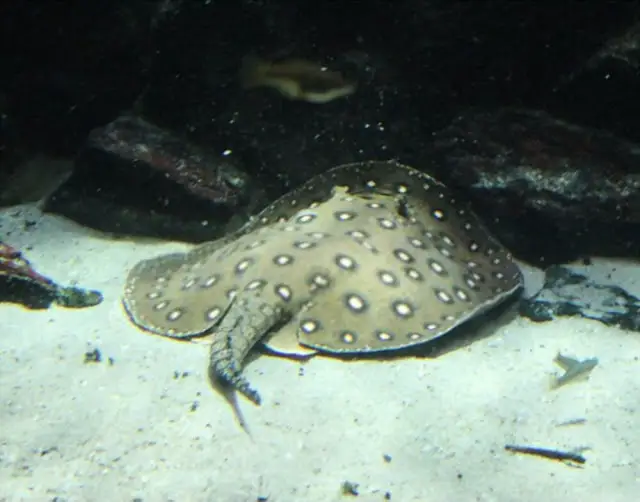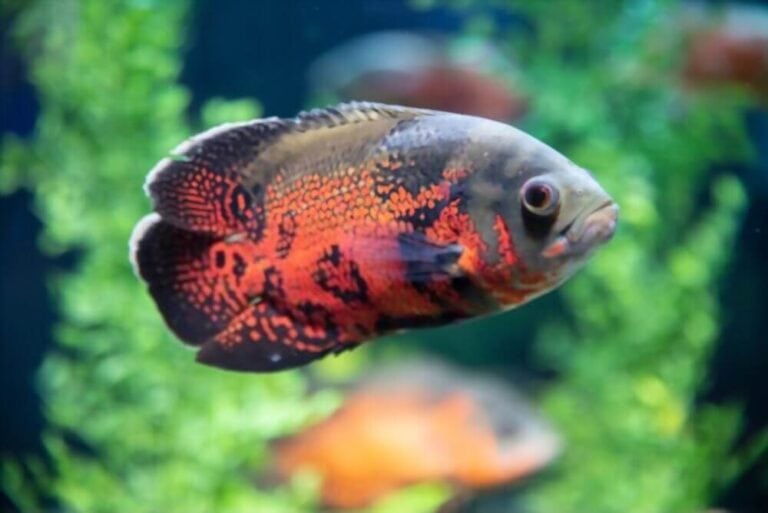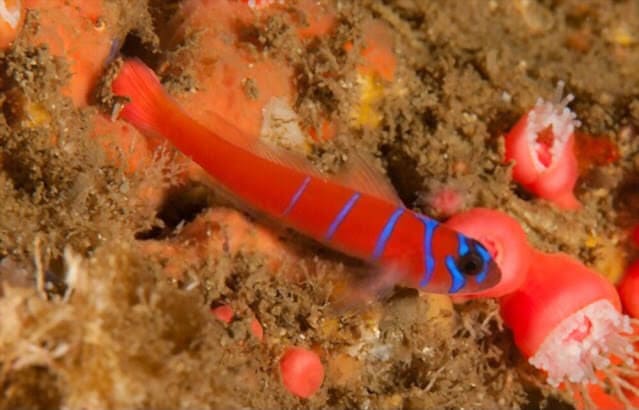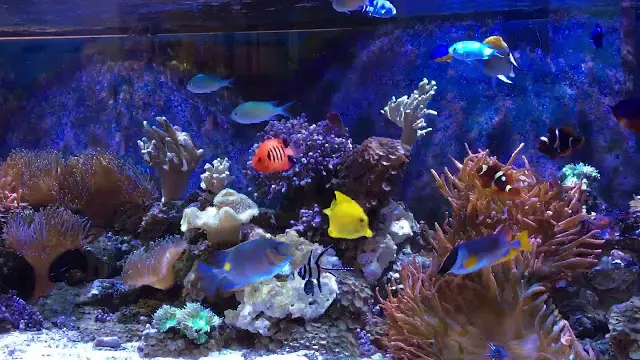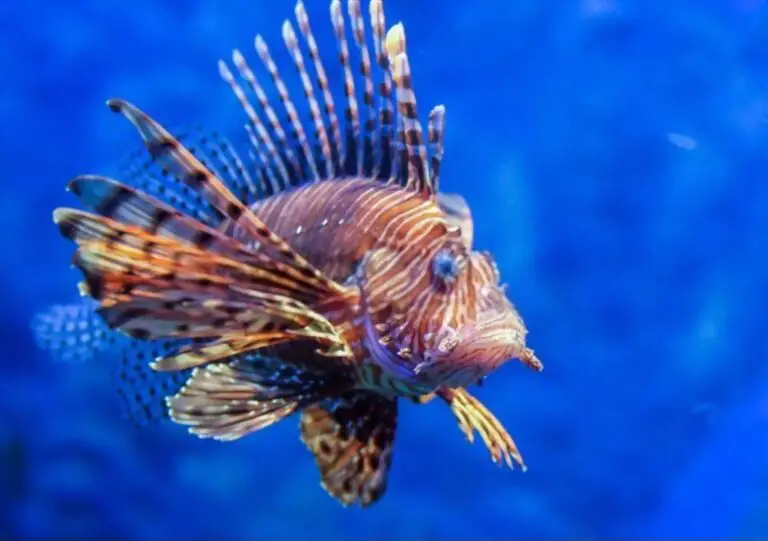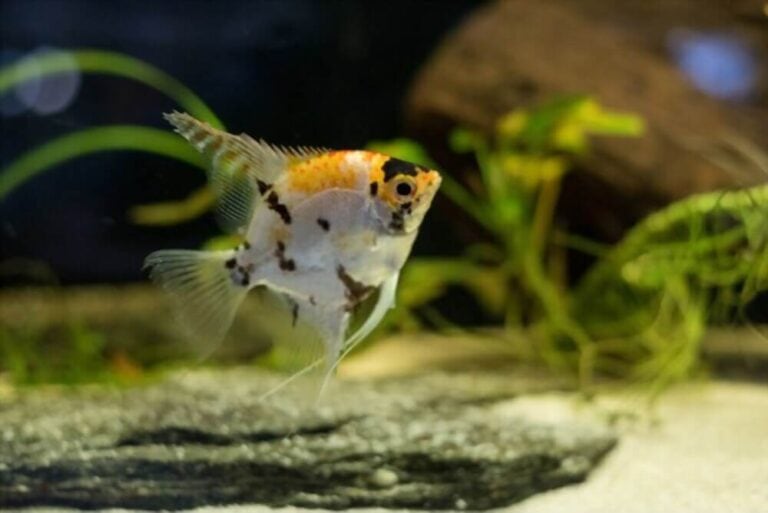Neon Goby Care Guide – Lifespan, Food, Breeding, Tank Size & Mates
Neon goby is a group of species of marine fish belonging to the genus Elacatinus. The genus Elacatinus covers almost 24 acknowledged species that are commonly known as gobies.
But only one species out of these 24 is genuinely regarded as neon goby and scientifically known as Elacatinus oceanops. But because of the inter-genus resemblances, the other genus species are also considered neon gobies.
They generally live in symbiosis with other organisms, where they serve as cleaning agents and help their symbiosis partners get rid of parasites. This is how they primarily get their nutrition.
Neon Goby Fish Species
The genus Elacatinus is a diverse group in phyletic lineage and contains 24 species.
Although all of the species in this genus are regarded as neon gobies based on similarities in appearance and many other aspects, Elacatinus oceanops is the only member of this genus to be regarded as Neon goby fish in technical and scientific terms.
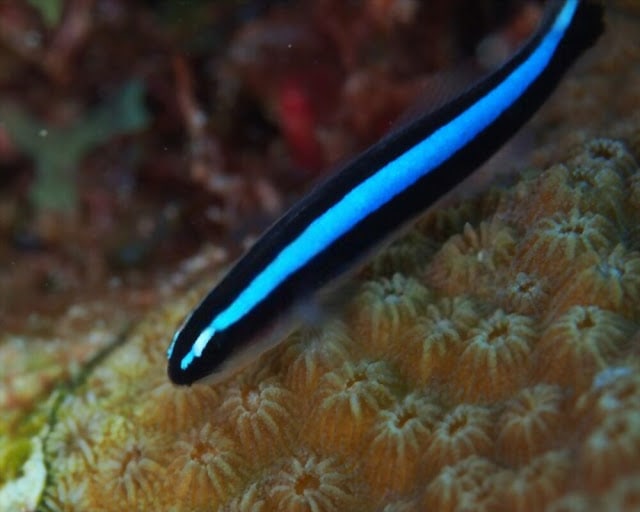
Blue Neon Goby
The Elacatinus oceanops, a true neon goby fish, are also commonly known as blue neon goby or simply goby fish.
It shows a pair of blue stripes over a black body and thus given the common name of blue neon goby.
This is a very hardy fish and is equally good for both beginners as well as expert aquarists. It is found to be single, in pairs, or groups of 30 or more gobies in the natural environment.
Being a small fish, it is not aggressive unless it is in a breeding pair as it is resistive towards the diseases and conditions fluctuations to some extent.
It is easy for the aquarists to take care of this fish. It exhibits the best example of a symbiotic relationship in the wild and serves as a cleaning agent to the host fish and gets the food in return.
Appearance & Size of Neon Goby
The neon goby is a small fish and grows just about 2.5 inches in length. It has an elongated slender body that is perfectly adapted to make this fish live as a symbiont.
The neon gobies have an overall black body with two thread-like striations along the body’s upper part. These striations are very glittering and run from the nose to the caudal fin.
They are usually hard to be sexually differentiated as the sexual differences are not visible because of their small body size.
You can differentiate the males from females at the time of breeding. Usually, the males have a sharp spear-like papilla just in front of the anal fin, whereas the females have a rounded papilla.
Because of being cleaning symbionts, it is doubtful that they would get eaten by the large fishes. Despite being small in size, the larger fishes recognize their service and leave them alone.
Lifespan of Neon Goby Fish
The Neon goby fish is expected to live up to a maximum life of about 2 years if it is caught in the wild-caught.
You will never know the age of your neon goby fish when you first caught and acquired them. That’s why the wild-caught species show a maximum lifespan of about two years.
But there are several reports about captive-bred neon goby fishes to live up to more than three years. But still, on average, they live up to 2-2.5 years.
They are hardy fishes and are easy to take care of, but the level of nitrates in the tank must be monitored as it can prove to be fatal for the neon goby.
Here are people’s experiences about the lifespan of neon gobies who have had them in the aquariums.
Neon Goby Care
Caring for neon goby fish is difficult as they are hardy and don’t have any specialized feeding requirements.
They are the best choice for beginner aquarists to start a fishkeeping journey. Though the neon goby is a hardy fish, a quarantine of a newly bought neon goby is suggested by the experts as you never know how many aquariums it has been in before reaching you.
Making monthly or weekly water changes is a basic need of any saltwater fish aquarium. However, the neon goby can take the fluctuations in water conditions up to some extent but still.
There is a need for 20% water change every month or 10% twice a month. If the levels of ammonia and nitrates in the water get risen due to any reason, an instantaneous water change should be done.
Caring for neon goby fish also requires a decent arrangement of the tank. They should be provided with crevices in the form of rocks to hide in on feeling frightened.
Given below are the requirements for the neon gobies to do well and survive.
- As they are tropical fish, they need a temperature range of 25°C to 28°C to perform well. Make sure to keep the water replaced under the same roof with an aquarium for a few hours before adding it to the tank. This will equalize the minimum temperature fluctuations.
- A Basic marine aquarium pH of 8.1 to 8.4 is needed. Large fluctuations in pH can be fatal for your fish.
- The hardness or carbonate levels of 8-12 dKH needs to be maintained in the aquarium.
- The salinity of the water should be maintained so that overall specific gravity should range from 1.020-1.025.
Feeding Your Neon Goby
Neon goby is a carnivorous fish, and in its natural habitat, feeds on small parasitic organisms, mostly from crustaceans groups.
What Do Guppies Eat? ( Diet Guide)
But in the aquarium, they can be kept alone or in a community tank with fewer tank mates. So, with such a limited chance of getting the food by its wild symbiotic ways.
It should be fed with meaty diets as well. It is good to keep them in a large community tank as you would get to see them attached with their tank mates more often.
Moreover, this is a fascinating scene to see them doing what they are evolved to do. Being small fish and high metabolism, the neon gobies need to be fed daily.
If they are placed in a community tank, they will get a small part of their nutrition by cleaning their tank mate’s parasites.
But this is not enough for them. They should be fed with a variety of marine life as well as frozen diets.
They can also be conditioned to be omnivorous feeders as several experts also suggest getting them used to vitamin-enriched flake foods. The mixed frozen carnivorous preparations that come in small cubic packages should also be fed to them.
Food List for Neon Gobies
As the neon gobies cannot get enough of their wild symbiotic ways of eating because of their limited tank mates, they should manually be fed various diets.
As mentioned previously that they are carnivorous and would readily accept live as well as frozen meaty foods.
Below is the list of food that neon goby fish feed and should be fed in the aquarium.
- Live foods such as small crustaceans ( Mysis, Krill, Artemia, Brine shrimps)
- Frozen crustaceans (frozen brine shrimps, frozen table shrimps, frozen Mysis shrimps)
- Pellets (occasionally)
- Vitamin enriched flakes
- Frozen food preparations for carnivorous fishes (Keep the mouth size of neon gobies in consideration while buying the prepared foods).
The captive-bred gobies would readily accept the foods to be offered. You may face some problems while feeding the wild-caught specimen. But once they are acclimated to the tank, they can be fed easily without having any trouble.
Tank Size & Setup for Neon Goby
The minimum tank size for a single specimen is 10 gallons. However, if you are going to keep a pair of neon gobies, a 30-gallon tank would generally be recommended.
It is not usually encouraged to keep the neon goby fish singly. They should be kept in mating pairs or in community tanks where they have opportunities to express their symbiotic cleaning nature.
In the wild, they inhabit the coral reefs, where they have plenty of feeding and hiding opportunities. Therefore, the tank to keep the neon gobies must be provided with plenty of live rock formations to offer places for them to refuge in.
Crevices or hideouts are their spawning spots as well. These fish are mid-level dwellers and need significant space to swim. Therefore, the decors and other aquarium stuff should be set in proper arrangement.
Moreover, the filtration setup is of pivotal importance, especially for the community tank. A good filter with the ability to efficiently do all types of filtration is necessary.
Thermostatic equipment would serve the purpose of the maintenance of water temperature. Lighting bulbs should be hung on the tank’s roof as neon gobies love brightly lit aquariums even at the time of spawning.
Guppy Tank Guide: Tank Size, Tank Mates & Tank Setup
Neon Goby Tank Mates
The glittering blue stripes on neon goby fish bodies serve as an indicator of “not to attack” for the predatory fishes.
Usually, the neon gobies are not harmed by the other fishes, but you can not say ‘never.’ It is not recommended to keep them with aggressive predators as they might regard these tiny fishes as food.
The neon gobies make a good and peaceful addition to the community tanks. They are not aggressive but become territorial towards other gobies when they are in mating pairs. The males will defend their territory and partners from other males.
In short, they can be added to any community tank with other peaceful community fishes. They can also share the tank with aggressive species, but it’s dangerous as they are so small that they can be regarded as prey.
Breeding Neon Gobies
The neon gobies are the first marine water fish to have spawned while being captivated. Identifying their sexuality is quite tricky, but once you purchase and leave them in the tank, they will pair up after getting acclimated.
The female will lay the eggs inside the crevices, and the male will fertilize the eggs. They will guard the eggs until they are hatched.
If your purpose is to raise the fries separately, you can put any cup-like or pipe-like structure in the tank where they can be attracted to spawn. Neon gobies have been bred in captivity by aquarists as well as on the commercial scale.
Final Words
The neon gobies are tropical fish found in the Western Atlantic’s relatively shallow warm waters, where they primarily inhabit the coral reefs ranging from Florida’s islands in the north, expanding towards the length of almost the whole of the Western Atlantic up to the northern parts of South America.
Only one species of this genus is an exception to this as it inhabits the eastern Pacific’s waters. They are mostly found in Shallow waters with an average depth of 1-2 meters, but they are also found to be living in depths of 40 meters or so.
Comment down below if you are keeping or planning to have this beautiful neon goby in your aquarium.
What do neon gobies eat?
Neon Gobies feed on small parasitic organisms mostly from crustaceans groups. You can offer them aquarium food to eat such as Live foods such as small crustaceans (Mysis, Krill, Artemia, Brine shrimps), Frozen crustaceans (frozen brine shrimps, frozen table shrimps, frozen Mysis shrimps), Pellets (occasionally), Vitamin enriched flakes, Frozen food preparations for carnivorous fishes (Keep the mouth size of neon gobies in consideration while buying the prepared foods).
How long do neon gobies live?
The Neon goby is expected to live up to a maximum life of about 2 years if it is caught in the wild-caught. But there are several reports about captive-bred neon goby fishes to live up to more than 3 years. But still, on average, they live up to 2-2.5 years.
Do neon gobies jump?
Neon gobies do not usually jump, but when they become a jumper one time, they can do it more often in the future.
